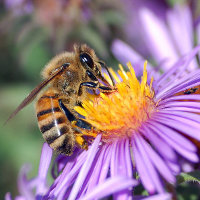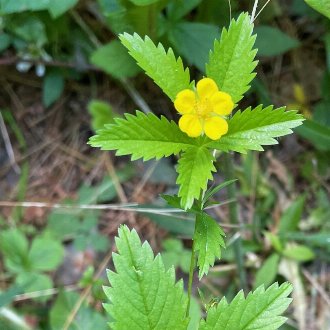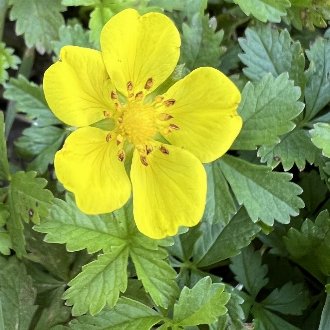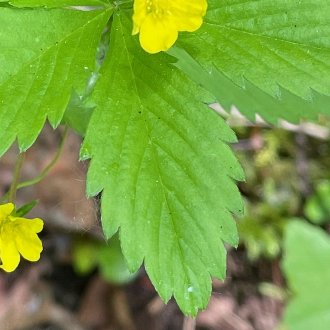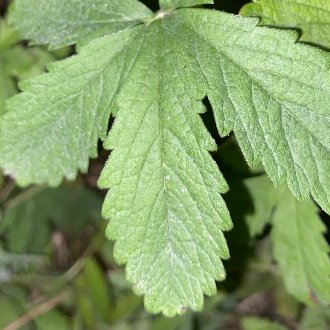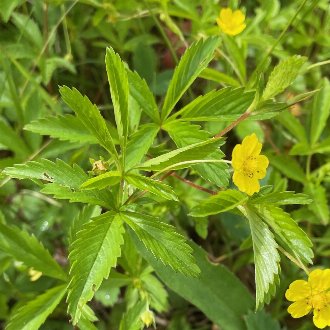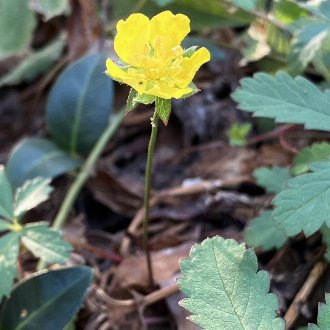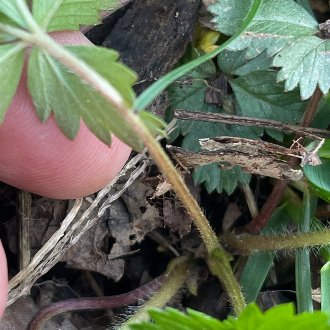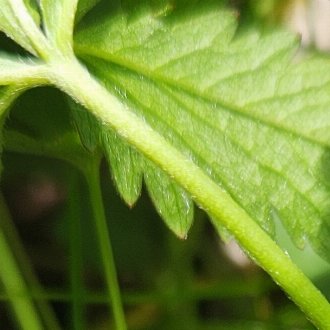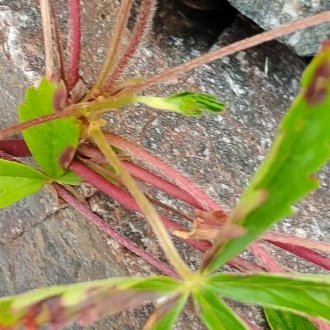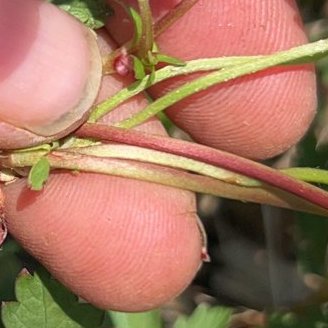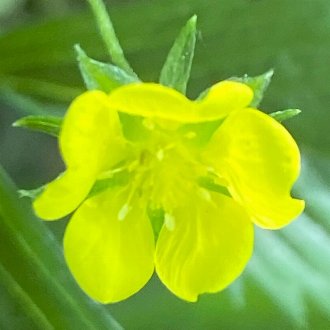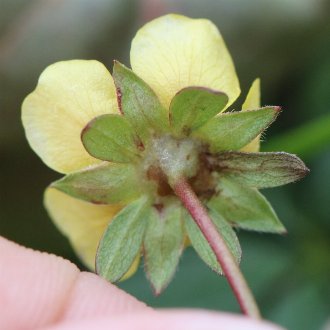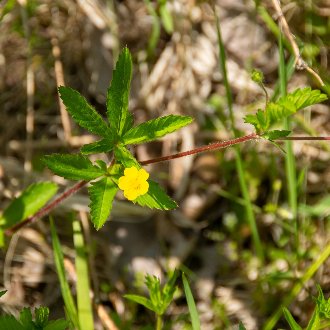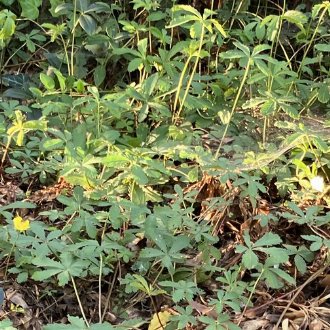Common Cinquefoil vs European Cinquefoil
These two species, one native and one introduced, are visually similar and can be easily confused. Both can occur in lawns. They are easily told apart by flower size, and have other subtle differences. The introduced P. reptans is only introduced in some regions, but can be abundant and invasive where it is; it ranges farther west and is more restricted to disturbed anthropogenic habitats with soils near neutral pH. The native P. simplex is common, ranges farther north, and prefers acidic soils and drier conditions.
Common Cinquefoil (Potentilla simplex) | European Cinquefoil (Potentilla reptans) |
A sprawling perennial native to eastern North America, found on sunny to partly-sunny sites. | A creeping perennial introduced at scattered sites across North America, invasive in places, preferring near-neutral pH. |
Flowers are much smaller, with petals usually 4-7mm long and 3-6mm wide. Photo © Tom Scavo, CC BY 4.0. | Flowers are much larger, with petals usually 7-9mm long and 6-9mm wide. Photo © Ian Wolfe, Public Domain. |
Leaflets taper to a narrower tip, and the serrations on leaf margins are sharper. Photo © Tom Scavo, CC BY 4.0. | Leaflets are more blunt-tipped, and the serrations on leaf margins are also more blunt-tipped. Photo © Yann Kemper, Public Domain. |
Pedicels (stems under each flower) average much shorter (1–5cm, rarely as long as 8.5cm) Photo © Tom Scavo, CC BY 4.0. | Pedicels average much longer (4–12cm, rarely as short as 2.5cm or as long as 15cm) Photo © Allen Browne, Public Domain. |
Petioles (stems connecting leaflets to the main stem or the base of the plant) average hairier, and hairs are more likely to spread outward. Photo © Tom Pollard, CC BY 4.0. | Petioles average less hairy, and hairs tend to be pressed against the stem, often tightly so. Photo © , CC BY-SA 4.0. |
Young, new growth of stems average much hairier and are usually hairier than petioles. Photo © Bryce Strobel, CC BY 4.0. | Young, new growth of stems average less hairy, and are sometimes even less hairy than petioles (thinner, greenish, above stems). Photo © mrssparverius, Public Domain. |
Epicalyx bracts (leaflike structures underneath sepals, lined up with petals) are narrower (1–1.5mm) and visibly narrower than sepals (leaflike structures underneath petals, alternating with them.) Photo © Christopher Volker, CC BY 4.0. | Epicalyx bracts are wider (1.5–3.5mm) and similar in width to sepals. Photo © Adrienne van den Beemt, CC BY 4.0. |
Growth habit is more upright; stems grow upwards initially, then arching, often sprawling or draping themselves over other vegetation. Stems are usually easily visible. Petioles on cauline leaves (along the stem) are much shorter (0-2cm) than the petioles of basal leaves. Photo © Daniel Patterson, CC BY 4.0. | Growth habit is more creeping, stems trailing along the ground. Stems are often not visible from a distance, and are often obscured by leaves and/or other vegetation. Petioles on cauline leaves are only slightly shorter (0.5–6cm) than the petioles of basal leaves. Photo © Allen Browne, Public Domain. |
Additional Notes
These species initially look very similar, but the closer you look at them, the more you realize there are a myriad of subtle differences, which together, make them easy to tell apart at a glance, even among plants that are not flowering. Their growth habits are superficially similar but quite different upon close examination. The shorter petioles on cauline leaves of P. simplex reflect the fact that its stems tend to reach higher up, and thus these leaves do not need to push up farther to reach light.The difference in flower size and pedicel length is also related to the differences in habitat preferences and growth habits. In the more fertile, near-neutral-pH soils preferred by P. reptans, there is usually steep competition from ground-level vegetation, and the flowers may need to push up farther from their point of attachment on the stem to be visible to pollinators. The flowers also benefit from being larger and showier, whereas the drier, more acidic habitats where P. simplex occurs tend to be more open and thus a smaller flower on a shorter pedicel is still visible enough for pollinators to find it. Also, however, P. simplex tends to have a more upright growth habit, so the flowers may be higher up on the plant even if the pedicel itself is shorter.
P. reptans is more restricted to disturbed habitats because, although it is highly competitive with low, ground-level vegetation, it cannot climb as well and thus can be rapidly shaded out by tall plants, and in the rich, near-neutral pH soils it prefers, it will get out-competed by taller plants in the absence of disturbance. In the less-fertile soils preferred by P. simplex, however, the ground-level vegetation stays thinner, but its ability to grow upright and sprawl also allows it to push up enough to capture light, thus allowing it to persist in less-disturbed habitats such as tallgrass prairies.
Both of these species can be confused with dwarf cinquefoil (Potentilla canadensis), but P. simplex is both more visually-similar and overlaps more in habitat, whereas there is little overlap of that species with P. reptans.
References & External Resources
These short lists show only links helpful for ID. For a complete list of references and resources also covering other aspects of ecology, visit the links section of the full article on each plant, which is the first entry here.

